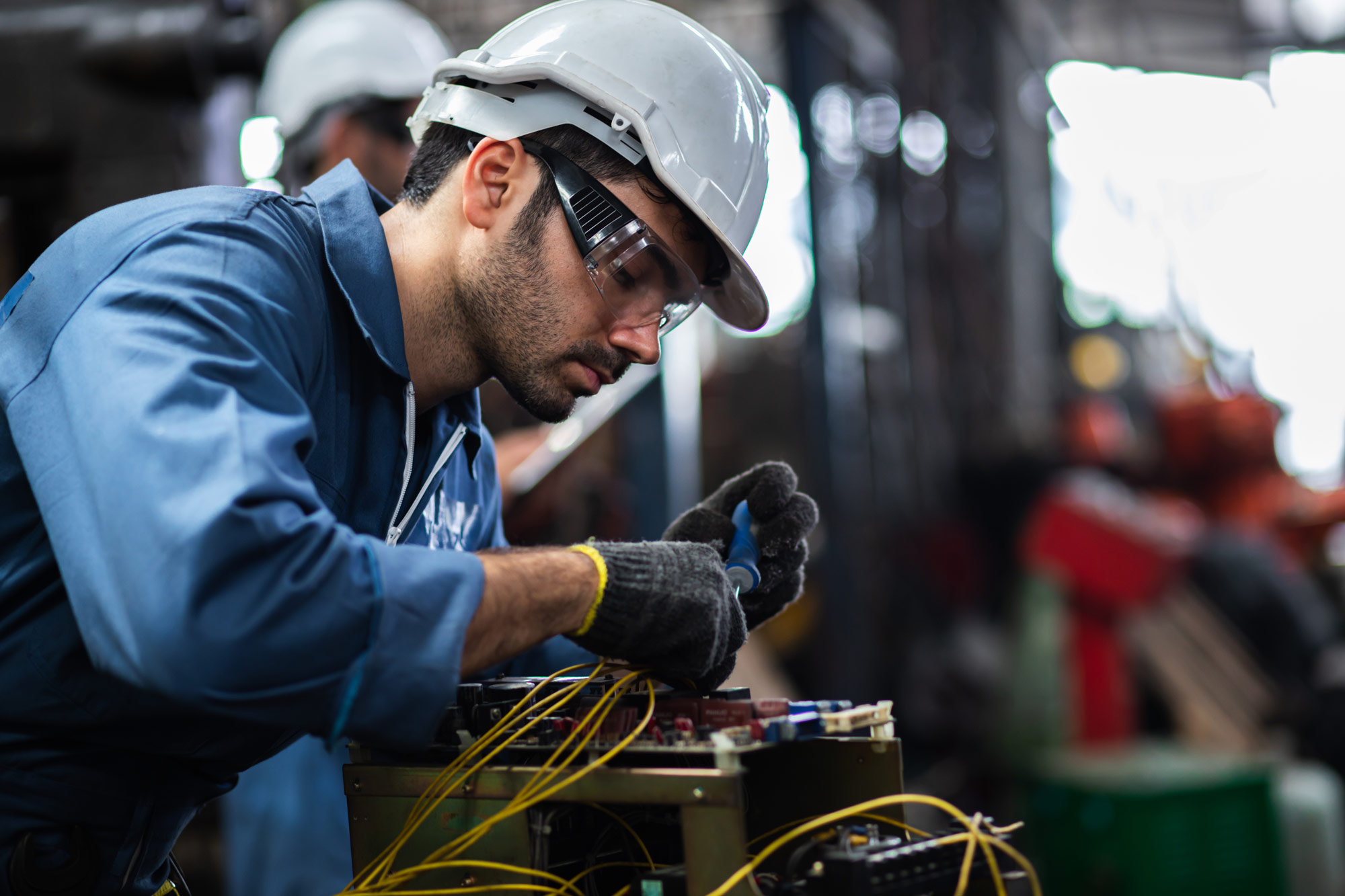
Q&A: Electrical equipment safety in the workspace
Although it is invaluable as a power source for our facilities and equipment, electricity is one of the most dangerous occupational hazards we face. Workers must be well trained to understand the hazards involved in working with or around energized electrical equipment. This is why only certain employees—those who possess the necessary safety training and expertise—are allowed to work with certain electrical equipment. Failure to recognize electrical hazards and follow safety precautions when working around such equipment can result in severe injuries—and even electrocution.
As a benefit to our EHS Hero subscribers, we offer a service called EHS Hotline. This service allows our clients to send their unique questions to our team of legal and subject-matter experts. The following are a few commonly asked EHS Hotline questions about electrical safety in the workplace, access to electrical equipment, and what employers need to do to comply with electrical safety regulations.
What is the definition of a “qualified person” for electrical work?
The Occupational Safety and Health Administration (OSHA) defines the term “qualified person” as “one who has received training in and has demonstrated skills and knowledge in the construction and operation of electric equipment and installations and the hazards involved.” Similarly, under the National Fire Protection Association (NFPA) 70E electrical standard, a “qualified person” is defined as “one who has demonstrated skills and knowledge related to the construction and operation of electrical equipment and installations and has received safety training to identify the hazards and reduce the associated risk.”
Whether an employee is considered a “qualified person” depends on the employee’s particular workplace circumstances. In addition, an employee may be regarded as a qualified person with regard to certain electrical equipment or electrical tasks in the workplace and not others depending on the employee’s training and expertise.
What electrical installations in my facility must be inaccessible to unqualified workers?
OSHA’s electrical safety rules at 29 Code of Federal Regulations (CFR) 1910, Subpart S state that spaces containing electric supply equipment can only be accessible to qualified workers. In general, unqualified persons must not have access to any unguarded energized electrical parts. In most cases, live parts of electrical equipment operating at 50 volts (V) or more must be guarded against accidental contact by using an enclosure such as a room, a closet, a cabinet, a vault, or another approved method. Entrances to all buildings, rooms, or other enclosures containing exposed live parts or exposed conductors operating at over 600 V, nominal, must be kept locked unless they are under the observation of a qualified person at all times.
Outdoor electrical installations with exposed live parts must also only be accessible to qualified persons. Most outdoor electrical installations must be enclosed with a wall, screen, or fence to prevent access by unqualified persons. Outdoor, enclosed equipment that is accessible to unqualified employees must meet the following requirements:
It must contain ventilating openings designed to deflect any foreign objects that may be inserted through them.
It must be equipped with guarding if exposed to physical damage from vehicular traffic.
Nonmetallic or metal-enclosed equipment accessible to the general public must be designed so that exposed nuts or bolts cannot be easily removed, which would allow access to live parts.
When nonmetallic or metal-enclosed equipment is accessible to the general public and the bottom of the enclosure is less than 8 feet (ft) above the floor or grade level, the enclosure door or hinged cover must be kept locked.
Doors and covers of enclosures used solely as pull boxes, splice boxes, or junction boxes must be locked, bolted, or screwed on (except underground box covers that weigh over 100 pounds).
It should also be noted that electrical equipment with ventilating openings must be installed so that walls or other obstructions do not prevent the free circulation of air through the equipment.
How much working space is required around electrical equipment operating at 600 V, nominal or less?
OSHA requires that sufficient access and working space (for qualified persons) be provided and maintained for electrical equipment operating at 600 V, nominal or less, so that the equipment can be operated and maintained readily and safely. Table S-1 under 29 CFR 1910, Subpart S provides a minimum working space depths required for equipment access. Distances must be measured from the equipment’s live parts if they are exposed. If they are enclosed, distances must be measured from the enclosure front or opening.
The width of the working space in front of the electrical equipment must be the width of the equipment itself or 30 inches (in.), whichever is greater. The working space must allow for at least a 90-degree opening of equipment doors or hinged panels in either case.
For electrical installations built before August 13, 2007, the working space must be clear and extend from the floor or surface the equipment stands on to a height of at least 6.25 ft. The minimum working space height for installations built on or after August 13, 2007, is 6.5 ft. However, if the height of the installation exceeds 6.5 ft, the headroom must be at least the same height as the equipment. Other equipment associated with the electrical installation located above or below the installation must not extend beyond six in. beyond the front of the electrical installation.
There must be at least one entrance to provide access to working space around the electrical installation. For electrical equipment rated 1,200 amperes or more and over 6 ft wide containing overcurrent devices, switching devices, or control devices, there must be one entrance that is at least 24 in. wide and 6.5 ft high at each end of the working space, except where otherwise noted in OSHA’s electrical rules.
For additional requirements about electrical safety, you can find OSHA’s general electrical safety regulations described in this post at 29 CFR 1910.303.



